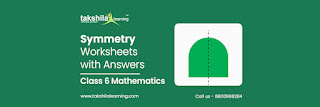Class 6 Maths - Symmetry Worksheet
1. Fill in the blanks:
- The number of capital letters of the English alphabets having no line of symmetry is ___________.
- The number of lines of symmetry in a regular hexagon is______.
- Digits with only two lines of symmetry are ______ and __________.
- The number of lines of symmetry in a square and a rectangle is ___________.
2. Match the following:
Shape Number of symmetry lines
- Equilateral triangle 5
- Rectangle 6
- Regular hexagon 3
- Regular pentagon Infinity many
- Circle 0
- Scalene triangle 2
Download Symmetry Worksheet for class 6 maths

Comments
Post a Comment
Thank you we will contact ASAP.